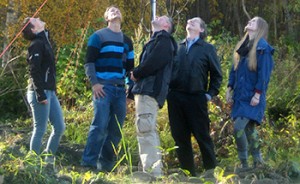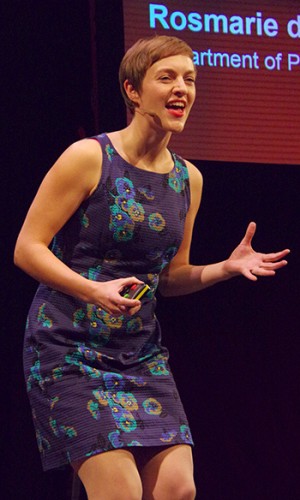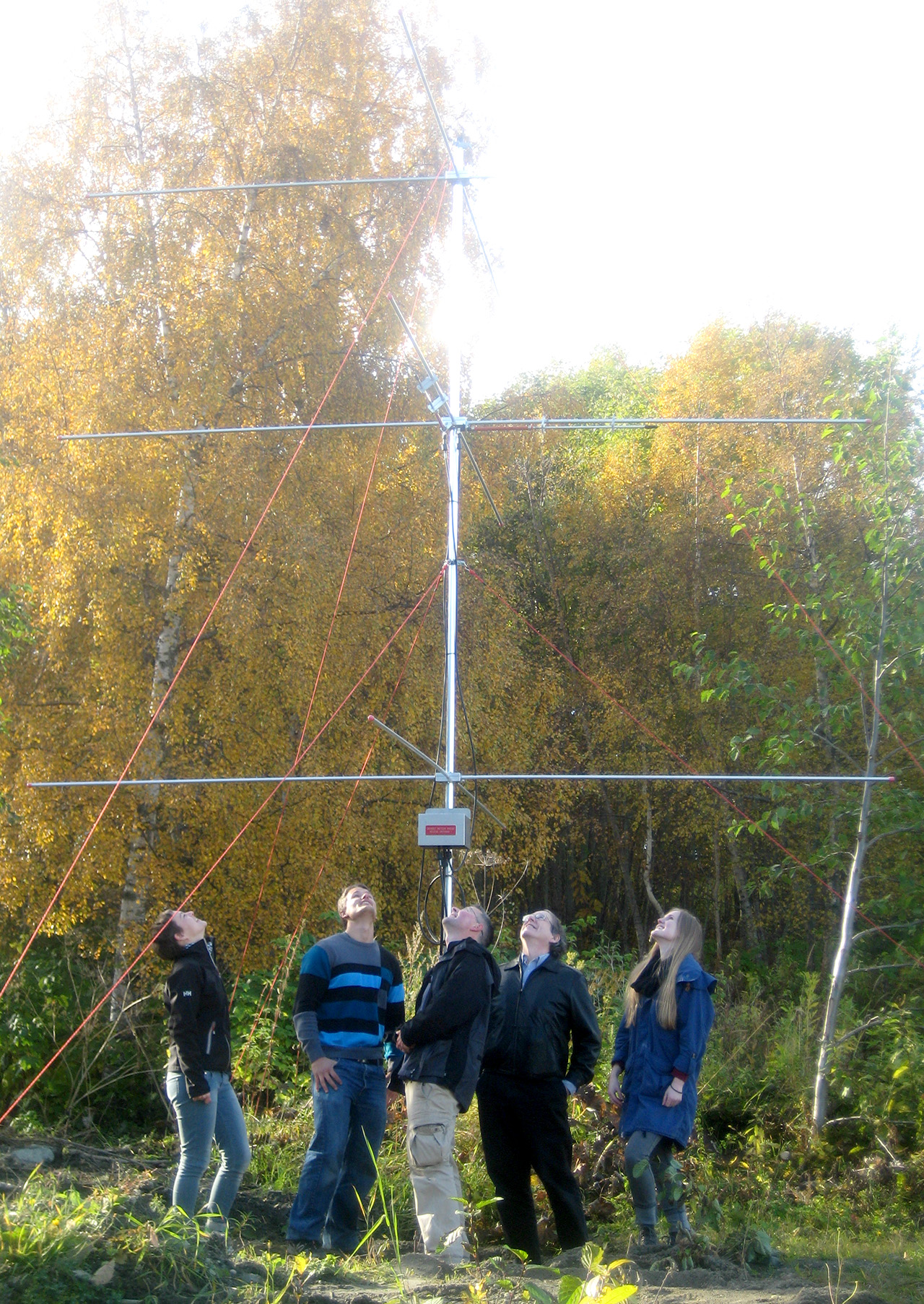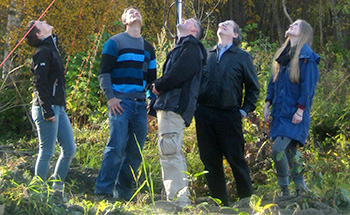 Rosmarie de Wit is doing her PhD in the Atmosphere and Environmental Physics group at NTNU. She collaborates with MORTEN the meteor radar, and together they measure small shooting stars in order to study weather at the edge of space. Rosmarie introduced MORTEN to the world during Forsker Grand Prix 2014. If you missed it but would like to meet him as well: this is your chance.
Rosmarie de Wit is doing her PhD in the Atmosphere and Environmental Physics group at NTNU. She collaborates with MORTEN the meteor radar, and together they measure small shooting stars in order to study weather at the edge of space. Rosmarie introduced MORTEN to the world during Forsker Grand Prix 2014. If you missed it but would like to meet him as well: this is your chance.
What would you wish for if you would see 10 000 shooting stars every day? Chocolate cake, new skis or a holiday to Hawaii? Well, after living in Trondheim for 3 years, I would definitely wish for improved weather forecasts. And guess what? Shooting stars can help us with that!
The weather at the edge of space
Meteorologists need very precise models to know what the weather will do next. It turns out it gets a lot easier to make a good forecast if all the air, from the surface and all the way up to 100 km (which I’ll call the edge of space, since it is so far away), is included in the weather models. But before these high air layers can be included in the models, we need to know what is going on up there. In other words: we need to measure weather at the edge of space.

And this is where shooting stars come in. Every day, 50 000 kg of space dust comes towards the Earth. That is a lot of dust, but luckily the atmosphere protects us and most of the dust burns up before it reaches the ground. The largest of these burning dust specs we can see: these are shooting stars. But there are many more much smaller dust specs burning up. These small shooting stars are called meteors. We cannot see them with the naked eye, but we can measure them.
A meteor trail reveals the weather
When a meteor enter the atmosphere, all the air molecules start to bump into it. The meteor gets very hot, and at about 100 km it burns up. When this happens, the meteor leaves a trail of charged particles behind. And it is this meteor trail that can tell us a lot about the weather at the edge of space.
MORTEN, the meteor radar
Luckily, we can measure this trail with an instrument called a ‘meteor radar’. NTNU has such a meteor radar, and his name is MORTEN. MORTEN can measure these small shooting stars by sending out a radio wave, or ‘pings’. These ‘pings’ travel all the way through the air until they reach the meteor trail. When they reach the trail of charged particles, they are reflected and bounce back to Earth. Now MORTEN listens, and when he hears the ‘pings’ again he knows he has detected a meteor.
MORTEN sees about 10 000 mini-shooting stars every day. But how can we use those to measure weather at the edge of space? Well, did you ever realize how the trail of clouds left behind by an airplane moves in the air? The trail moves because it is blown with the wind. The same happens to those meteor trails 10 times higher up in the sky. So by checking how fast a meteor trail moves MORTEN the meteor radar can measure the winds 100 km above the ground.
But that is not all. If you have ever seen a shooting star, you know they disappear very fast. A meteor trail only lasts for about 2 seconds, but it depends on the temperature how long it lasts exactly. The warmer it is, the faster the trail disappears. By timing how long it takes before the trail has disappeared, MORTEN the meteor radar can therefore also tell us the temperatures at the edge of space.
MORTEN can make my wish come true
So by measuring small shooting stars, we can study weather at the edge of space. And by studying weather at the edge of space, we can help improve those weather forecasts, and make my wish come true!

